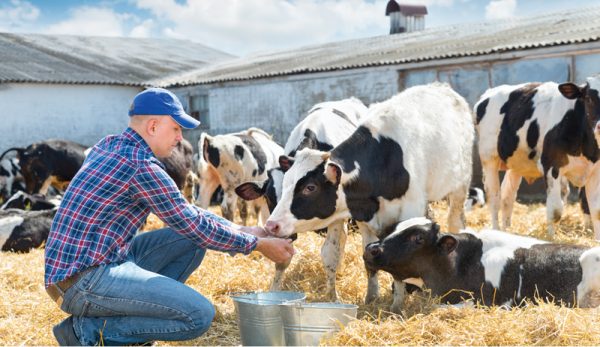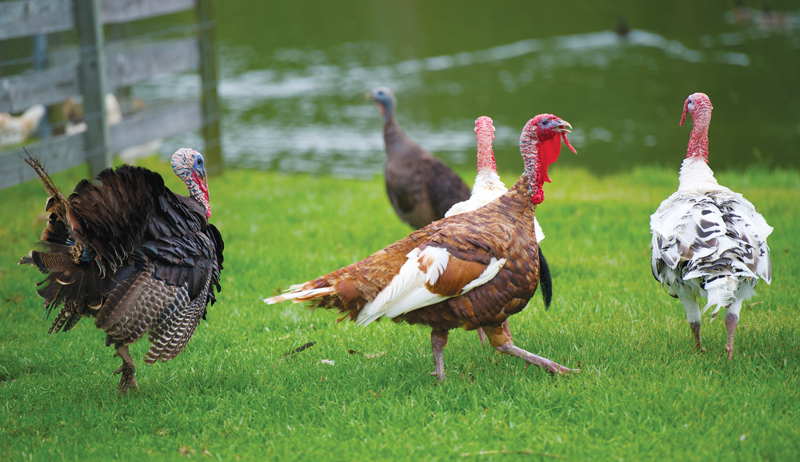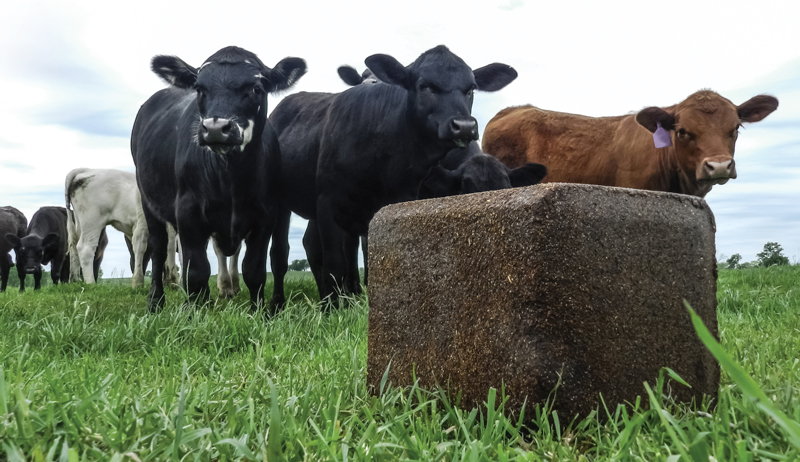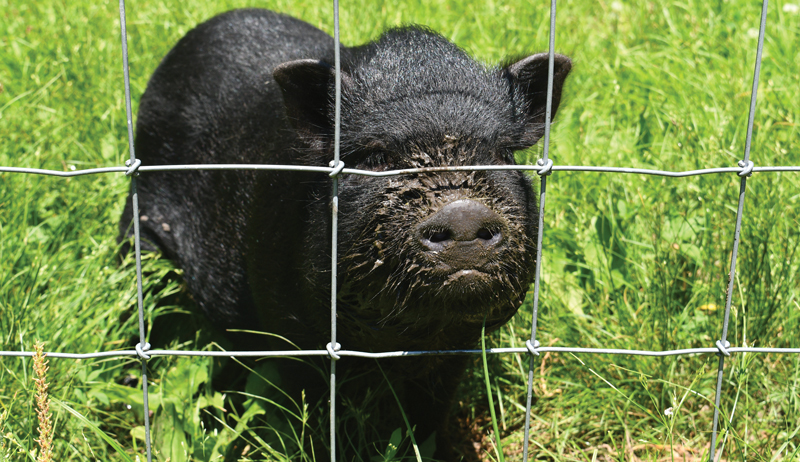
As an animal nutritionist and small-farm consultant, one of the biggest issues I see on small farms is the lack of attention paid to nutrition. The mindset is often one of complacency toward nutrition, thinking that because high production isn’t an end goal, it’s OK to feed whatever you want. If your animals seem outwardly fine, the belief goes, all is well.
Certain misconceptions about animal nutrition can often be critically dangerous to your animals’ health. Animal nutrition should be just as important to small farmers as farm hygiene and appropriate animal husbandry.
Small Farm Benefits
Usually when people think about animal nutrition, they’re using it as a tool to increase production.
This is a major way that nutritional information can be used.
But in many cases, I see this as a positive side effect for small farmers after they use nutrition to appropriately address a separate concern.
Read more: Here are some things to keep in mind when you’re reading a livestock bag.
Help With Breeding
I see classified ads all the time for cows or nannies or ewes that all say the same thing: “selling because she doesn’t breed back.” Did you know this can be fixed via proper nutrition?
If you aren’t meeting your animals’ basic needs for maintaining their own bodies, there is no way they’re going to catch. Before selling, reevaluate your nutrition plan for your breeding stock.
Increase Egg Production
Another common issue I run into is hens that aren’t laying. If all other farm conditions are right and the hen is healthy, nutrition is usually the answer.
Other Animal Benefits
Nutrition can also be a major factor in maintaining the overall health, thriftiness, condition and even temperament of an animal. Poor-tempered animals are sometimes like that due to underlying health issues. But some of these can be addressed with proper nutrition.
So, what is proper animal nutrition? I will go through some basics of animal nutrition and use examples for how it can be applied to your farm.
Because these topics go hand in hand, I’ll also address different labels for animal products and how you need to manage your animals’ nutrition appropriately, even if it isn’t in line with your personal beliefs about certain feedstuffs.
Feed a Balanced Diet
When you feed what nutritionists like to call a “balanced” diet, that means you’re meeting all the needs of your animals for the maintenance of their own body functions, plus whatever they’re producing (meat, milk, eggs, offspring, etc.).
A balanced diet is going to provide them with the appropriate amount of energy they need. They’ll inject all the macro- and micronutrients they require, too.
If you own a dairy cow, for example, its diet is going to change throughout its dry period, pregnancy and different stages of lactation. During the dry period, you need to manage energy and calcium intake carefully to prepare for calving.
A diet that is too energy- and calcium-rich is going to make the cow much more susceptible to milk fever and ketosis. Both of these conditions can be deadly.
As your cow freshens and enters early lactation, it may need more energy than it can take in. If you’re just feeding hay, even if it’s high quality, this probably isn’t going to provide energy. A full belly doesn’t equal enough energy.
You would adjust its diet again after freshening to include a higher energy feed source. That’s usually some kind of grain. As the cow continues on throughout lactation, its energy requirements will decrease. Then you’ll be able to transition it back down to a lower energy feed.
Read more: It’s important to select the right feed feed for the age and purpose of your chickens.
But Alli…
Now, I know what you’re going to say. “But Alli, I just turn my ol’ Bessy out on the pasture and she milks fine.”
Alright, that may be true if your cow isn’t naturally a huge producer. Its body doesn’t require as much energy after freshening.
Additionally, though your cow may seem fine, track its body condition to make sure it really is maintaining a healthy weight. Or test its blood levels for BHBA, an indicator of ketosis.
For the most part, livestock are tough and don’t complain much. But if you aren’t familiar with what can go wrong, you won’t know what to look for so you can prevent it.
Use extreme caution when mixing your own feeds for animals you’re using for production. I see this most commonly with laying hens.
The reason commercially available feeds often have more than three ingredients is because meeting a production animal’s needs requires many varied nutrients.
This is something that is possible to achieve on your own. But it’s going to be expensive and difficult to gauge success without getting your mix analyzed a few times. I always recommend reviewing homemade mixes with a professional nutritionist if that is a route you’d like to take.
Pay Attention to Micronutrients
Another area of nutrition greatly ignored on the small farm is micronutrients—i.e., vitamins and minerals. But these are essential for health and production.
These won’t be cheap. And they aren’t going to be something you can just throw on top of some hay for animals to gobble up. But they are important enough that you should be willing to pay for them.
Vitamins and minerals can be difficult to feed because they often come in a powdered form—something that animals don’t readily want to lick up. So I like to mix them into a feed the animal enjoys and powder can stick to, such as sweet grain or some soaked alfalfa cubes.
I sometimes hear of people leaving out seven buckets of different powdered vitamins and minerals, thinking their animal will instinctively know what to eat. But…
- First, no animal is going to want to go lick up bitter powder, no matter how badly they need nutrients.
- Second, you’ll have so much waste. Buckets get knocked over, the powders soiled, and it will be a disaster.
- Third, you won’t know how much your animal is eating. If you opt for powdered micronutrients, mix them into a feed you can monitor, saving yourself headache and money.
You can also purchase vitamin and mineral blocks. (Note: These are not the same as a salt block.)
They’re great because they’re usually more affordable and convenient, already properly balanced and taste good to animals. But remember, you still have no idea how much of the block your animals are actually eating.
If you do opt for blocks, avoid putting them in pastures with a lot of animals. This makes it even more difficult to tell what is being consumed. Also, the weather can degrade your block, leading to wasted money for you.
Read more: Be careful when providing minerals to your livestock.
Avoiding Certain Feedstuffs
If you want your animals to be “grass-fed” or “grain-free” or any other type of label, that is totally fine. But you need to adjust your production goals and time frame accordingly.
Grass is a lower energy feed and will take longer to make any animal product (eggs, milk, meat).
Sometimes, longer isn’t better from a sustainability standpoint. Farming is looking at the big picture and what is going to work best for your land and animals on your farm. There is nothing wrong with feeding a high-energy feed source, such as corn or some other grain, according to your animals’ nutritional requirements.
For example, you could supplement grains only at critical times, such as during pregnancy or lactation. Contrary to all the misinformation out there, livestock (especially ruminants) are able to digest and eat a wide variety of feedstuffs. This is possible because the main way they digest their feed is via fermentation by microbes.
Make the Right Diet Decisions
I can’t tell you how many times I have seen good animals not make it because of poor nutrition management. It is completely heartbreaking. And most of the time, it is totally preventable.
Management is everything, so do it right and don’t mess around.
Different feedstuffs are simply vehicles for certain nutrients. If your animal needs certain nutrients, find an appropriate vehicle for those nutrients.
Sometimes this will be a feedstuff you don’t mind feeding. Other times it may be a feedstuff you’re not as comfortable with.
Your animals’ lives depend on your willingness to manage their nutrition appropriately. Please don’t bet your pride on them. At the end of they day, they don’t have the same needs, desires, and feelings we do—especially about feed.
Sidebar: Healthier Cattle Pastures
When a pasture or hay field becomes less productive than desired, renovation can help improve or renew the land. Here are a few things every farmer can do to maximize the nutrition of their pasture plants.
1. Test your soil.
After receiving the results of your soil test, apply amendments, such as lime and fertilizer, if necessary. Legumes need a higher soil pH and fertility level than grasses. However, avoid using nitrogen-based fertilizers if you have 25 percent or more legumes.
Added nitrogen stimulates grasses, which then compete with the legumes.
2. Reduce vegetative cover.
This is best achieved with heavy grazing in late fall and early winter. Removing excess grass cover will make it easier to help legume seed make contact with the soil.
3. Carefully select the legumes you use.
The legumes you choose to use in your pastures will depend on the soil and the planned use of the forage.
4. Use the right kind & amount of seed.
Select plant varieties that grow well in your area. Your local extension agent can point you to current research about appropriate varieties.
The only way to be sure of what you’re planting is to use certified seed. Also be sure to mix the appropriate high-quality inoculates with the seed just before planting, along with a sticking agent to ensure the inoculates adhere to the seed.
Most legume seed currently available is per-inoculated. Check the seed tag or inoculate bag for the “plant by” date.
Plant the seed so it makes good contact with the soil. A simple, effective method is to broadcast the legume seed on the soil surface in late winter. As the soil freezes and thaws, the seeds become covered, though this method does not work well with alfalfa.
Make sure the stand is grazed or cut closely so that most plant residue is removed and the seed hits the soil surface.
5. Control grass and weed competition.
After legumes start to grow, this step is one of the most critical. Many attempts to renovate pastures have failed simply because the grass was allowed to grow and reduce the light, nutrients and water available to the young legume plants.
The grass must be kept short via grazing or mowing until the new legume plants are 3 to 4 inches tall. Stop grazing if the cattle bite off the young legume leaves. After reaching 3 to 4 inches in height, grazing and mowing should stop for several weeks to allow the legumes to become well established.
After legumes are well established, the field should be mowed or grazed regularly to help maintain good condition. We highly recommend adopting a rotational grazing system to ensure optimal pasture management.
In addition to a rotational grazing system, a “rest-rotational” system could extend the usefulness and productivity of the pasture.
Depending on acreage involved, you might want to consider a mixed-species grazing system with cattle and meat goats or sheep. Holistic resource-management systems are outstanding forage harvesting systems with livestock, too.
— Garry D. Lacefield, a forage specialist at the University of Kentucky Research Education Center, and Ray Smith,
a forage extension specialist, Department of Plant and
Soil Sciences in the University of Kentucky’s College of Agriculture.
This article originally appeared in the November/December 2020 issue of Hobby Farms magazine.




